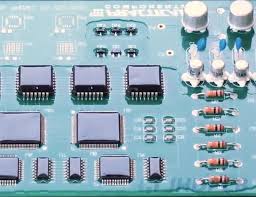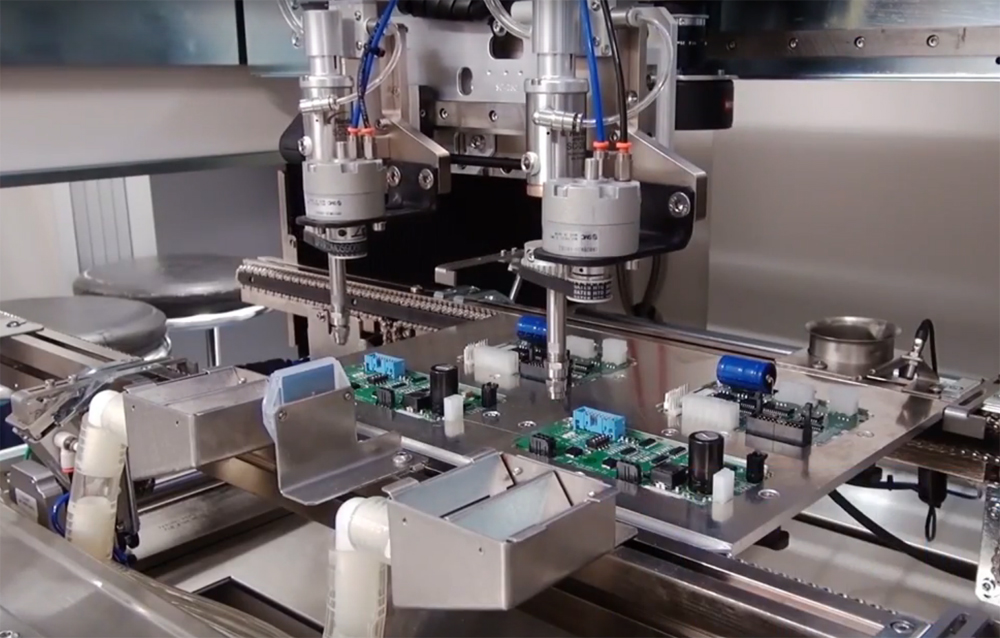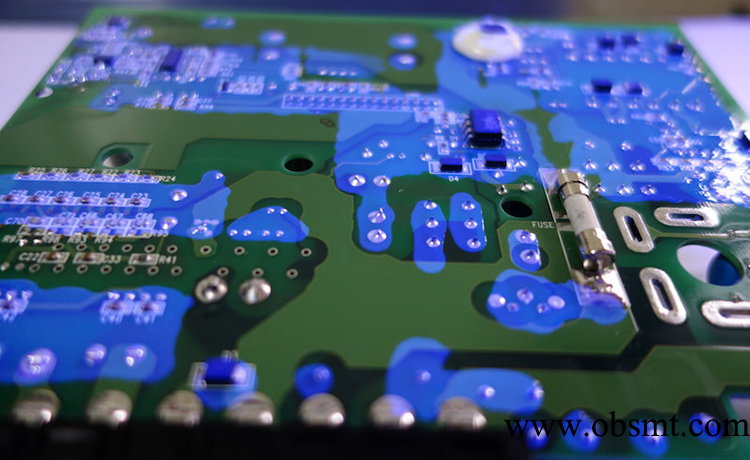If you're an electrical engineer looking to scale from prototype to production, you might be wondering how to efficiently apply conformal coating to protect your printed circuit boards (PCBs). The answer lies in automated conformal coating machines. These systems boost throughput, ensure consistent quality, and offer a strong return on investment (ROI) for high-volume production. In this blog, we'll dive deep into how automated machines can transform your conformal coating process, covering throughput, cost justification, and their role in batch production.
Why Conformal Coating Matters in PCB Production
Conformal coating is a protective layer applied to PCBs to shield them from moisture, dust, chemicals, and temperature extremes. For engineers, this isn’t just a nice-to-have—it’s often a critical step to ensure reliability in harsh environments, such as automotive, aerospace, or industrial applications. Without proper coating, a PCB could fail due to corrosion or short-circuiting, leading to costly rework or product recalls.
During the prototype phase, manual coating methods like brushing or dipping might work. But as you scale to production, these methods become slow, inconsistent, and labor-intensive. This is where automated conformal coating machines step in, offering precision and speed to meet high-volume demands.

The Challenges of Scaling Conformal Coating from Prototype to Production
Scaling up production introduces several challenges for engineers. First, manual coating can’t keep up with the volume. Applying coating by hand for hundreds or thousands of boards daily is impractical and prone to human error—uneven layers or missed spots can compromise protection.
Second, consistency matters. In high-volume production, every board must meet the same quality standards. Manual methods often result in variations in thickness, which can affect performance. For example, a coating that’s too thin might not protect against moisture, while one that’s too thick could interfere with component functionality or increase weight unnecessarily.
Lastly, time is money. Manual processes slow down production cycles, creating bottlenecks that delay delivery. For engineers working on tight schedules, this can be a dealbreaker. Automated conformal coating machines address these issues head-on, offering a scalable solution for batch production and beyond.
What Are Automated Conformal Coating Machines?
Automated conformal coating machines are specialized systems designed to apply protective coatings to PCBs with precision and speed. These machines use technologies like selective coating, where the system targets specific areas of the board, avoiding connectors or sensitive components. They can handle various coating materials, including acrylics, silicones, and urethanes, depending on the application requirements.
These machines come in different configurations—some are inline systems integrated into a production line, while others are standalone for batch production. They often feature programmable controls, allowing engineers to set parameters like coating thickness (typically between 25 to 250 microns) and application speed, ensuring repeatability across thousands of boards.

Conformal Coating Machine Throughput: Speeding Up Production
One of the biggest advantages of automated conformal coating machines is their throughput. For high-volume production, these systems can process hundreds of boards per hour, compared to manual methods that might handle only a few dozen in the same time. For instance, a mid-range selective coating machine can achieve speeds of up to 500 mm per second during application, drastically reducing cycle times.
Throughput isn’t just about raw speed—it’s also about minimizing downtime. Automated machines often include features like quick-change nozzles or multi-head applicators, allowing for rapid switching between different coating types or board designs. This flexibility is critical when dealing with diverse product lines or custom orders in batch production.
For engineers, higher throughput means meeting production targets without sacrificing quality. Imagine a scenario where you’re producing 10,000 automotive control units monthly. An automated system could coat each board in under 30 seconds, keeping your assembly line moving smoothly and ensuring on-time delivery to clients.
Automated Conformal Coating for High Volume Production: Precision at Scale
In high-volume production, precision is non-negotiable. Automated conformal coating machines excel here by delivering uniform layers across every board. They use advanced vision systems and software to map the PCB layout, ensuring coating is applied only where needed. This selective application reduces material waste—often by up to 30% compared to manual methods—and prevents issues like coating buildup on connectors or heat sinks.
Consistency also translates to reliability. In applications like aerospace, where a PCB failure could be catastrophic, automated systems ensure that each board meets strict standards, such as IPC-CC-830 for coating thickness and coverage. For example, a typical machine might maintain a thickness tolerance of ±10 microns, far beyond what manual methods can achieve.
Additionally, automation reduces labor costs in high-volume settings. Instead of multiple operators applying coating manually, a single technician can oversee the machine, freeing up staff for other tasks like quality control or assembly.

Conformal Coating Machine ROI: Is It Worth the Investment?
For many engineers and decision-makers, the upfront cost of an automated conformal coating machine can seem daunting. Entry-level systems might start at $50,000, while advanced inline systems for high-volume production can exceed $200,000. However, calculating the return on investment (ROI) reveals why these machines are a smart choice.
First, consider labor savings. If manual coating requires two full-time operators at $25 per hour, that’s $100,000 annually for a 40-hour workweek. An automated machine, requiring minimal oversight, could cut this cost by 75% or more. Second, material efficiency plays a role. By reducing waste, a machine might save $10,000 or more per year on coating materials, depending on production volume.
Then there’s the value of increased throughput. If an automated system lets you produce 50% more units per month, the revenue boost can quickly offset the initial cost. For instance, a company producing 5,000 boards monthly at a $10 profit per unit could see an additional $25,000 in monthly revenue by doubling output to 10,000 units with automation.
Finally, quality improvements reduce rework and warranty claims. If defective boards cost $500 each to replace and automation cuts defects by even 5%, the savings add up fast. Most companies report breaking even on their investment within 12-24 months, making the ROI for conformal coating machines highly attractive.
Conformal Coating Machine Cost Justification: Building the Business Case
Justifying the cost of a conformal coating machine to management often requires hard numbers. Start with a cost-benefit analysis. Calculate current expenses for labor, material waste, and rework due to manual coating errors. Compare these to the machine’s price tag, factoring in savings over 3-5 years.
For example, if manual coating leads to a 10% defect rate on 10,000 boards annually, and each defect costs $100 to fix, that’s $100,000 in losses. An automated machine with a 2% defect rate cuts this to $20,000—a $80,000 annual saving. Add in labor and material savings, and you might save $150,000 yearly, justifying a $200,000 machine in less than two years.
Don’t forget intangible benefits. Faster production cycles can win contracts by meeting tight deadlines, while consistent quality builds customer trust. For engineers presenting to stakeholders, frame the machine as a competitive edge, not just a cost. Highlight how it positions the company for growth in demanding markets like automotive or medical electronics.
Conformal Coating Machine for Batch Production: Flexibility and Efficiency
Batch production, where you manufacture a set number of units before switching to another product, requires flexibility. Automated conformal coating machines are ideal here because they can be programmed for different board designs and coating requirements. Modern systems often include user-friendly software, letting engineers upload new PCB layouts in minutes via CAD files.
For small to medium batches—say, 500 to 5,000 units—these machines balance speed and adaptability. A standalone batch coating system might process 100-200 boards per hour, with quick setup times between runs. This prevents the downtime you’d face with manual methods, where reconfiguring for a new batch could take hours.
For engineers, this means handling multiple projects without bottlenecks. Whether you’re coating boards for industrial sensors one day and consumer gadgets the next, an automated machine keeps production on track. Plus, many systems offer data logging, so you can track performance metrics like cycle time or material usage per batch for continuous improvement.
Key Considerations When Choosing an Automated Conformal Coating Machine
Before investing, evaluate your needs as an engineer. Consider these factors:
- Volume Requirements: Match the machine’s throughput to your production goals. High-volume lines need inline systems, while batch production might suit standalone units.
- Coating Material: Ensure compatibility with your chosen coating (e.g., acrylic, silicone). Some machines handle multiple types, others are specialized.
- Board Complexity: For intricate PCBs with no-coat zones, look for machines with advanced vision systems and selective coating capabilities.
- Footprint and Integration: Check if the machine fits your facility and integrates with existing assembly lines.
- Support and Maintenance: Opt for vendors offering local support and spare parts to minimize downtime.
Budget also matters. If $200,000 is out of reach, consider a used or entry-level machine for $30,000-$50,000 to start, then upgrade as production scales.
Real-World Impact: Case Studies of Automated Coating Success
Seeing automation in action drives home its value. A mid-sized electronics manufacturer in the automotive sector switched to an automated conformal coating machine after struggling with manual dipping for 2,000 boards monthly. Post-automation, their throughput tripled to 6,000 boards, defect rates dropped from 8% to 1%, and they saved $60,000 annually on labor and materials. The machine paid for itself in 18 months.
Another example is a contract manufacturer handling batch production for medical devices. Using a programmable coating system, they cut setup time between batches from 4 hours to 30 minutes, allowing them to take on more clients and boost revenue by 20% in one year.
These stories highlight how automation solves real engineering challenges—faster production, better quality, and lower costs.
Conclusion: Scaling with Confidence Using Automated Conformal Coating
Transitioning from prototype to production doesn’t have to be a struggle. Automated conformal coating machines offer the throughput, precision, and flexibility needed to scale efficiently. Whether you’re focused on high-volume production or batch runs, these systems deliver measurable ROI through labor savings, reduced waste, and improved quality. For electrical engineers, they’re a game-changer—ensuring your PCBs are protected without slowing down your workflow.



